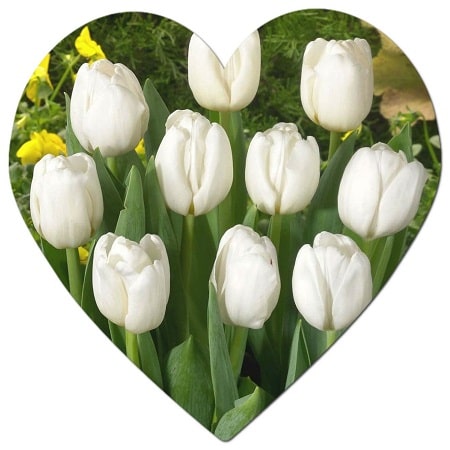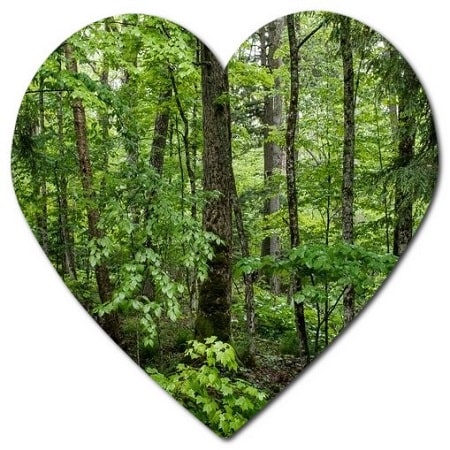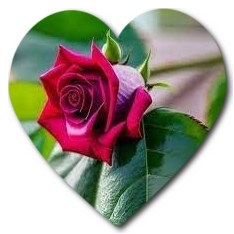In Toronto, you can find a wide range of plants and flowers due to its diverse climate and ecosystems. The diverse vegetation in Toronto is influenced by the city’s geographical location and four distinct seasons. It includes native plants, cultivated flowers, and a mix of urban and natural greenery.
Toronto, Canada, has a diverse range of plants that grow in its various natural habitats, gardens, and parks. The city’s climate is influenced by its location in the Great Lakes region, which has a significant impact on the types of plants that thrive in the area. Here are some common types of plants you can find in and around Toronto:
- Deciduous Trees: Toronto is known for its beautiful display of deciduous trees, including maple, oak, beech, birch, and poplar. Sugar maples, in particular, are famous for their vibrant fall foliage.
- Coniferous Trees: Various evergreen trees can be found in Toronto, such as white pine, red pine, white spruce, and Eastern hemlock.
- Flowering Shrubs: Many flowering shrubs are cultivated in Toronto’s gardens and parks, including lilacs, rhododendrons, hydrangeas, and forsythias.
- Native Wildflowers: The city and its surroundings feature native wildflowers like trilliums, blue flag iris, black-eyed Susans, and asters.
- Perennials: Toronto’s gardens often include a wide variety of perennials like hostas, daylilies, peonies, and coneflowers.
- Bulb Plants: Spring-blooming bulb plants like tulips, daffodils, and crocuses are commonly planted in the city’s flower beds.
- Water Plants: Toronto’s many water bodies support aquatic plants like water lilies, cattails, and various submerged aquatic vegetation.
- Urban Plantings: In urban areas, you’ll find ornamental plants, annuals, and green spaces designed with a mix of trees, shrubs, and flowering plants.
- Invasive Species: Like many urban areas, Toronto also faces challenges from invasive plant species, such as garlic mustard and Japanese knotweed, which can threaten native vegetation.

The Toronto Islands, High Park, the Toronto Botanical Garden, and other natural areas and parks in the city provide opportunities to explore and appreciate the rich plant diversity found in the Toronto area. Additionally, the Toronto region experiences four distinct seasons, with beautiful displays of spring blossoms, summer greenery, colorful fall foliage, and snowy winter landscapes.
What plant are native to Toronto?
Toronto and its surrounding natural areas are home to a variety of native plants. These plants have evolved in the region and play a crucial role in the local ecosystem. Some native plants commonly found in and around Toronto include:
- Trillium (Trillium grandiflorum): The trillium is Ontario’s official flower and is a well-known symbol of the province. It produces large, white, three-petaled flowers and is often found in woodlands and forested areas.
- Eastern White Pine (Pinus strobus): The eastern white pine is a tall, evergreen tree with soft, flexible needles. It’s an important tree species in the region and has been historically used in the timber industry.
- Sugar Maple (Acer saccharum): The sugar maple is famous for its stunning fall foliage, producing vibrant red and orange leaves. It is the source of maple syrup, a Canadian delicacy.
- Red Oak (Quercus rubra): Red oaks are hardwood trees with lobed leaves and acorns. They are common in Toronto’s woodlands and forests.
- Black-Eyed Susan (Rudbeckia hirta): This native wildflower produces yellow daisy-like flowers with a dark central cone. It is often found in meadows and open areas.
- Blue Flag Iris (Iris versicolor): Blue flag iris is a wetland plant with attractive violet-blue flowers. It thrives in marshy or riparian areas.
- Wild Bergamot (Monarda fistulosa): This native perennial plant, also known as bee balm, features clusters of tubular, pink to lavender flowers. It attracts pollinators like bees and butterflies.
- New England Aster (Symphyotrichum novae-angliae): Asters are common in the region, and the New England aster is known for its purple or blue flowers. It blooms in late summer and fall.
- Joe-Pye Weed (Eutrochium maculatum): A tall, native wildflower with pink or purple, dome-shaped flower clusters. It grows in wet areas and attracts butterflies.
- Spicebush (Lindera benzoin): Spicebush is a deciduous shrub with aromatic leaves and small yellow flowers. It is found in woodlands and along streambanks.
These are just a few examples of the native plant species in the Toronto area. Native plants play a crucial role in supporting local wildlife and maintaining the ecological balance of the region. Conservation efforts often aim to protect and restore native plant communities in natural areas around Toronto.
What type of vegetation is in Toronto?
Toronto’s vegetation is diverse and includes a variety of natural and cultivated plant species. The city’s vegetation can be categorized into several types:
- Forests and Woodlands: Toronto has several natural forests and woodlands, both within the city and in nearby conservation areas. These areas are home to a mix of deciduous and coniferous trees, including species like maple, oak, beech, white pine, and red pine. High Park is an example of a natural area within the city with a significant forested area.
- Wetlands: Wetlands are an important part of Toronto’s ecosystem. They support various aquatic and semi-aquatic plant species like cattails, water lilies, sedges, and rushes. These areas are important for water purification and wildlife habitat.
- Grasslands and Meadows: In natural areas and urban parks, you can find grasslands and meadows with native grasses and wildflowers like black-eyed Susans, goldenrods, and asters.
- Riparian Zones: Along rivers, streams, and ravines, you’ll find riparian vegetation, which includes various tree species, shrubs, and water-loving plants.
- Gardens and Parks: Toronto is known for its well-maintained gardens and parks, which feature a wide variety of ornamental plants, perennials, annuals, and flowering shrubs. The Toronto Islands and the Toronto Botanical Garden are examples of areas with beautiful cultivated gardens.
- Urban Vegetation: In the urban environment, street trees, public gardens, and green spaces are designed with a mix of trees, shrubs, and flowering plants to enhance the city’s aesthetics and provide green spaces for residents.
- Invasive Species: Like many urban areas, Toronto also faces challenges from invasive plant species, such as garlic mustard, Japanese knotweed, and phragmites, which can outcompete native vegetation.

Overall, Toronto’s vegetation is influenced by its location in the Great Lakes region and experiences four distinct seasons, with lush greenery in summer and vibrant fall foliage. The city places importance on preserving natural areas and supporting urban green initiatives to maintain a healthy and diverse urban ecosystem
Popular flowers growing in Toronto
Toronto’s diverse climate and growing conditions allow a wide variety of flowers to thrive in the city. Many popular flowers can be found in gardens, parks, and public spaces throughout Toronto. Some of the popular flowers that are commonly grown in Toronto include:

- Tulips: Tulips are a staple in Toronto’s gardens and are often planted in large numbers, especially in the spring when the city hosts the annual Canadian Tulip Festival.
- Daffodils: These bright and cheerful spring flowers can be found in many Toronto gardens, parks, and natural areas.
- Roses: Roses are classic and widely grown in Toronto’s gardens and are often seen in various colors and varieties.
- Lilies: Asiatic lilies, daylilies, and other lily varieties are popular choices for adding color and elegance to Toronto gardens.
- Peonies: The large, fragrant blooms of peonies are a favorite in Toronto, and they are often used in floral arrangements.
- Irises: Irises come in various colors and are a common sight in Toronto’s gardens.
- Geraniums: Geraniums, both annual and perennial varieties, are known for their vibrant blooms and are commonly grown in containers and flower beds.
- Sunflowers: These towering, cheerful flowers can be found in community gardens and natural areas around Toronto.
- Marigolds: Marigolds are easy-to-grow annuals that are popular in many Toronto gardens and parks.
- Zinnias: Zinnias come in a range of colors and are valued for their long-lasting, vibrant blooms.
- Hydrangeas: Hydrangeas are popular for their large, showy flower heads and are often seen in Toronto’s gardens.
- Orchids: These exotic flowers are also grown in Toronto, especially in indoor environments such as conservatories and botanical gardens.
These are just a few examples of the popular flowers you can find in Toronto. Toronto’s green spaces, public gardens, and residential neighborhoods are filled with colorful blooms that change with the seasons, making the city a vibrant and inviting place for plant enthusiasts and flower lovers. Names of flowers that grow in Toronto >>
Which plants and flowers grow well in Toronto?
Native Trees: Maple, oak, beech, white pine, and red oak are native trees that thrive in Toronto’s forests and woodlands.
Spring Bulbs: Tulips, daffodils, and crocuses are popular spring-flowering bulbs commonly planted in gardens and parks.
Perennials: Flowers like peonies, irises, daylilies, and hostas are commonly grown perennials.
Annuals: Marigolds, zinnias, and petunias are commonly planted annual flowers that provide colorful displays.
Shrubs: Flowering shrubs like hydrangeas, lilacs, and forsythias are popular choices in gardens.
Water Plants: Cattails, water lilies, and other aquatic plants thrive in wetland areas and along water bodies.
Wildflowers: Native wildflowers include trilliums, black-eyed Susans, asters, and goldenrods.
Rose Varieties: Toronto’s gardens often feature various rose varieties, including hybrid teas and floribundas.
Evergreens: Coniferous trees like white pine and spruce are commonly found in Toronto’s woodlands.
Exotic and Cultivated Varieties: Orchids, tropical plants, and various exotic species are cultivated in indoor environments, conservatories, and botanical gardens. Names of popular plants and flowers growing in Toronto >>
